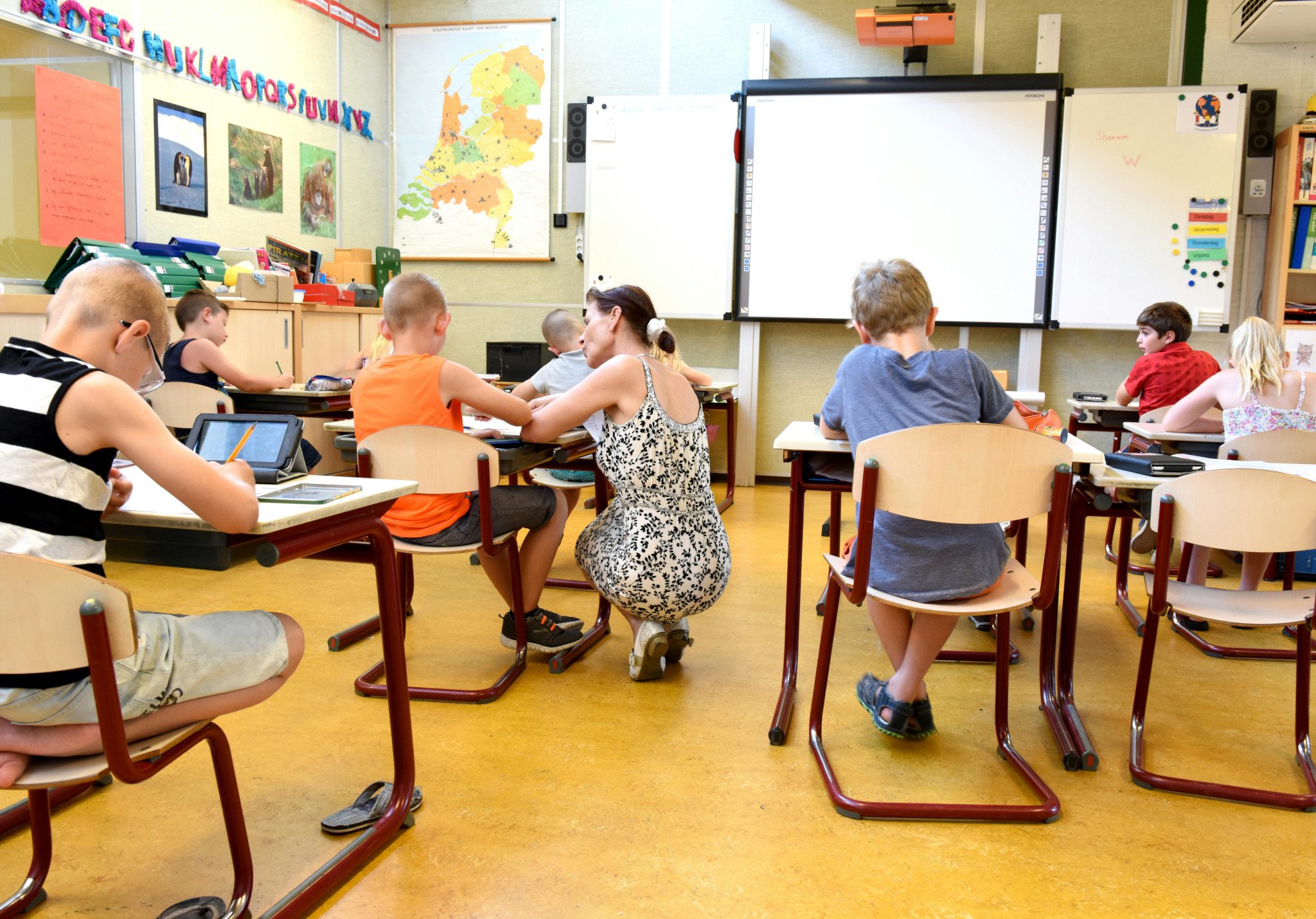Many students struggle with writing assignments — and that’s understandable. It’s a cognitively challenging activity that requires extensive effort on the part of the writer. However, there are metacognitive strategies that you can teach your students to make this process easier for them.
Students can use metacognition in writing to reap the numerous learning benefits that writing-related activities bring. Here’s why developing metacognition in writing helps students approach the writing process effectively to help them become stronger writers.
What is metacognition in writing?
Often described as “thinking about your own thinking,” metacognition is about being actively aware of how you think and learn.
It involves students planning, monitoring, and evaluating their own learning and adapting their approach as needed. Students work to identify their own strengths and weaknesses in learning areas, consider the effectiveness of different task-specific approaches, and learn to use strategies to better their own learning.
Metacognition in writing asks students to look beyond the end product and to examine the processes that got them there. They think deeply about their writing, looking back to strategies that have led to successful writing and helped them get past challenges they have encountered. Moreover, students set writing goals and reflect on what they’ve learned from each piece of writing.
In fostering metacognition in writing, educators help students become more intentional and self-regulated writers.
Strategies for teaching metacognition in writing
Metacognition can help students become better writers as they are more focused on the effort and process, rather than the final grade.
Educators can provide guidance by asking students to engage in metacognitive practices before, during, and after writing. And though different writing assignments will require different approaches, students can use metacognitive strategies as a tool across subject areas and even outside the classroom.
Let’s take a look at some strategies for developing metacognition in writing with your students.
Encourage students to organize and monitor their writing
It can be overwhelming for students to simply get started with a writing assignment. Using planning strategies such as organizing ideas, activating prior knowledge, and compiling research can break a writing task down into more manageable chunks.
Similarly, teaching students to monitor their writing in progress helps them take control of the writing process, ensuring they stay aligned with their writing objectives. And the writing task doesn’t end when students hand in their assignments! Afterwards, students can engage in a critical review of their writing to assess and improve its quality while considering the strategies they use to meet the criteria for effective writing.
Guide students through their own writing with self-questioning techniques
Self-questioning is a practical tool for metacognition in writing for students to actively guide themselves through the writing task. In this strategy, students consciously question themselves about how they think, understand, and learn.
For instance, students can use self-questioning at the planning stage by asking clarifying questions aimed at understanding what the task requires. This helps them to identify strategies and feedback to apply to the task. By doing so, students also become an active participant in the learning cycle.
Make space for reflection to deepen students’ understanding of their own writing processes

What is the purpose of reflection in learning? It is closely related to metacognition, when students look back on experiences to see what went well, what could be improved, and how any lessons learned can be applied in the future. Intentionally making space for students to reflect on their learning experiences gives them a chance to think deeply about and learn from them.
Students may not, however, see the same value in reflection as their teachers do! If this is the case, making reflection a part of the assignment ensures students make the effort to use critical thinking and give an honest assessment of their process. The reflection strategies below can help integrate it quickly and effectively into the writing process.
Help students find a method of reflection that works well for them
Reflection should be dynamic and can take different forms. Students might talk together about their writing experiences in a think-pair-share format, making it a collaborative activity where they also benefit from their peers’ observations.
Students can also use a digital learning journal to keep track of the writing strategies they used, any teacher feedback they received, and the goals they set to shape their next effort. Or, students may simply jot down a few notes in the margin as they work.
Have students reflect during the writing process
Reflection isn’t confined to the end of an assignment. Students can use reflection as a valuable pre-writing strategy to ensure they tackle an assignment with a plan and a clear understanding of the question.
During writing, students can pause mid-task and use reflection-in-action to monitor and assess how effectively they’re progressing, adapting as needed in response.
At the end of a task, students can reflect on which strategies were effective (or indeed ineffective!) and how the choices they made throughout the process impacted the overall quality of their final product.
Students can also use self-questioning techniques during reflection. Here, they can prompt themselves to consider how to relate their current performance to a future learning experience, asking themselves questions such as “What didn’t work well?” and “How can I adapt my approach next time?”
Use reflection to help students acknowledge their own achievements
You can also use reflection time to acknowledge student successes and build their confidence.
For example, did they find the perfect source to support their point of view or manage to write an amazing opening sentence? How did they overcome an obstacle and what did they learn about problem solving in that particular context?
Have students set goals to make their writing development intentional

Setting writing goals is closely linked to metacognition, empowering students to take control of their own writing development. Educators should actively encourage students to set goals since we can’t assume students will independently and deliberately establish their own writing objectives.
In this way, the somewhat abstract aim of becoming a stronger writer is broken down into tangible targets that students can achieve along the way. Goals can give students a sense of direction and purpose, acting as a benchmark for measuring progress.
Goal setting can take different forms, whether it is related to the overall objective of the assignment or targeted to more individualized areas for improvement. If a student has received feedback about their choices of sources in a Kialo discussion, for instance, they should work on closely evaluating and selecting credible sources in their next attempt.
Students can use reflection to set goals and then evaluate how well they’ve met their intentions. A specific reflective question like “How well did you meet your initial writing objectives?” can bring focus to students’ goal-setting.
Use group work and peer-to-peer scaffolding to facilitate metacognitive processes
Writing is often a solitary activity, but group work can harness the benefits of social and collaborative learning to provide a measure of peer-to-peer scaffolding.1 In working alongside their peers, students are required to articulate their ideas and receive input from an alternative perspective in return.
This collaborative work means that students can talk through obstacles together, offer each other advice, and share alternative resources. By prompting an explicit discussion of their thinking and learning processes, students make the effort to verbalize and adjust their thinking processes.
Try having small groups of students examine a writing assignment carefully to identify a suitable approach to it together. Students can use a Kialo discussion to collate and organize ideas, record their sources, practice integrating domain-specific vocabulary, identify gaps in their knowledge, and come to reasoned conclusions before writing an argumentative essay.
Once students have organized their ideas, have them continue the planning process by having them outline and visualize the writing assignment as a whole. Students should be tasked to identify the main argument, the key points of paragraphs, and any language they want to use.
Workshop writing skills to illustrate the thinking process from a teacher’s perspective
Very few writers get their wording or even content right on a first draft. Workshopping drafts can help students see writing as an iterative process where it is normal to revise and refine your work.
It can also play a role in establishing a collaborative and supportive learning environment, helping students deal with false starts and the inevitable challenges that come with writing.
Teachers can use think-alouds to demonstrate their own thinking processes, offering students insight into how an experienced writer or domain expert tackles a task. This might be to illustrate your thinking when narrowing down the main argument into a well-crafted thesis, or when evaluating a paragraph for clarity and relevance. You could also give explicit instruction in using complex sentences effectively or how signposting language can make a text more reader-friendly.
Then, let students put your guidance into practice using writing samples you have sourced from outside the classroom. You can populate a Kialo discussion with poorly worded claims, for instance, to use as an exercise for students to tackle revising for clarity. Give small groups Editor permissions in a discussion and encourage them to comment on the claims to explain their edits.
Students can also bring a sample of their own work to practice self-assessment with the helping hand of constructive feedback from their teacher and peers, refining it in class with their help. This way, students receive tailored attention and can work on targeted areas of improvement. Added to that, having someone point out the strengths of your writing also feels pretty good!
If you’d like to try out a Kialo Edu discussion to support your budding writers but need some inspiration, we have a library of debate topics ready to go. We’d love to hear about how you foster metacognition in the writing classroom so please do get in touch at feedback@kialo-edu.com or on any of our social media channels.

